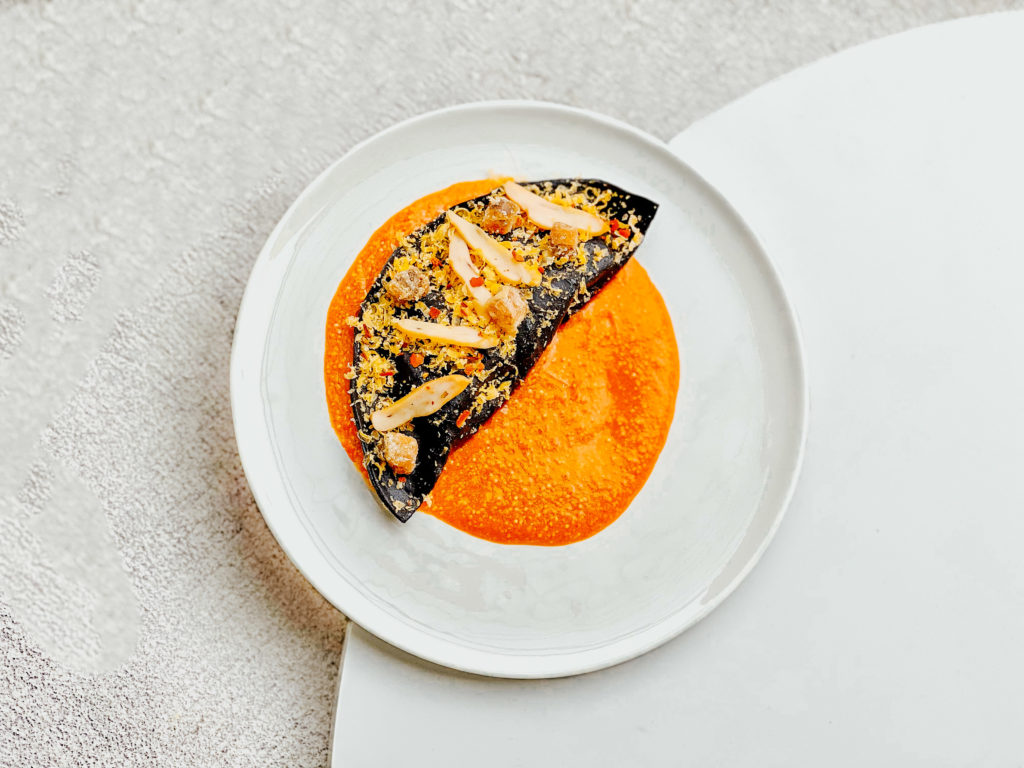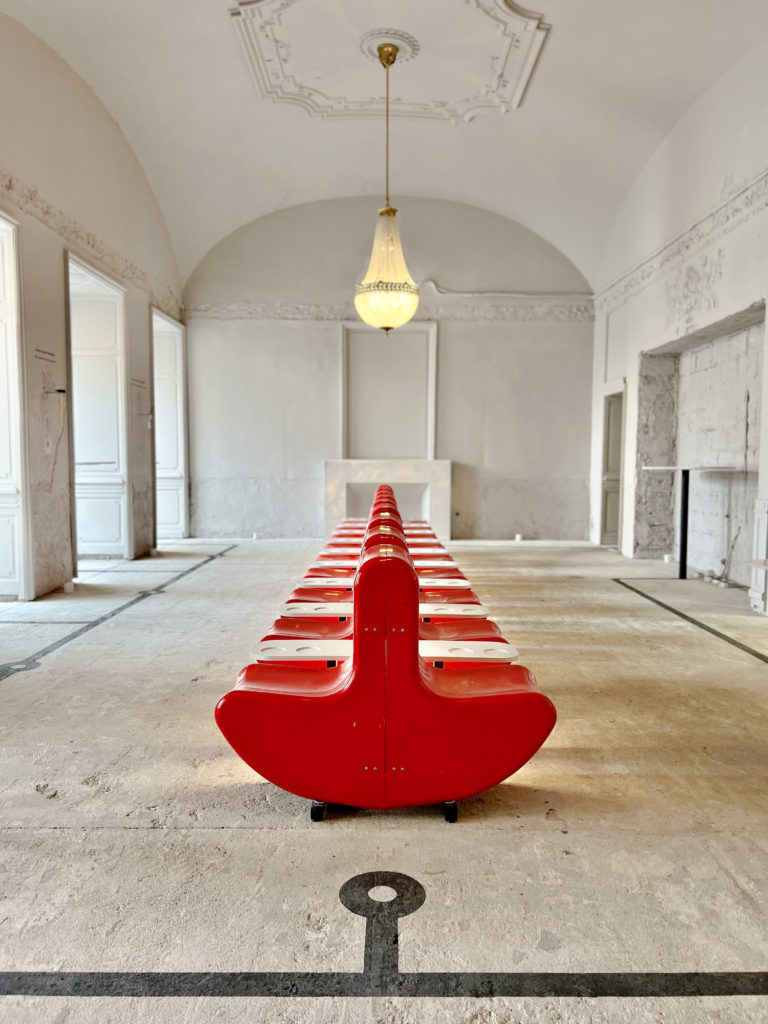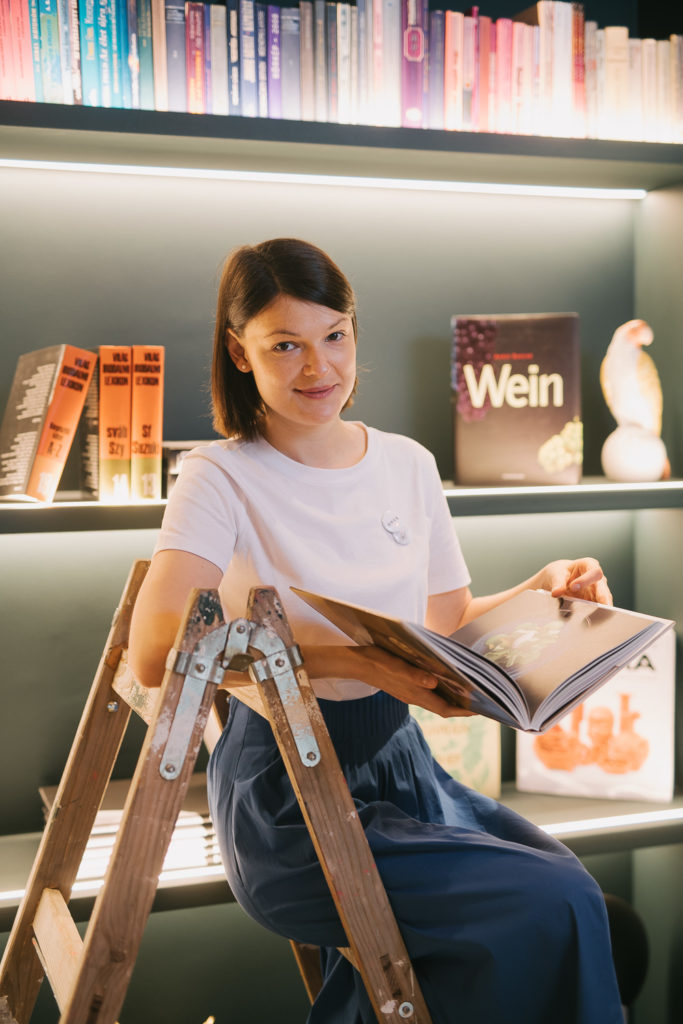Not only food, but a work of art and a source of experience, too
Az esemény Merkl Márta doktori hallgatónk kutatásához kapcsolódott, amely az étkezési élményről szól. Őt kérdeztük a témáról.

You are a fourth-year student in the Corvinus Doctoral School of Business and Management, and a member of the Creative Community of the Onyx Műhely, and the topic of your thesis will be food design. How does anyone become a food design researcher?
I have a degree in Tourism and Hospitality (BBS), too, but I started to work with my Art History (ELTE) and Design and Art Management (MOME) degrees. I got acquainted with food design while I was working for the Moholy-Nagy University of Art and Design, and then I applied for admission to the Corvinus Doctoral School. The title of my doctoral research is “Food design as a social and economic catalyst’. Food design means the planning and the careful arrangement of the food, the drinks and the environment – such as the assets, the space, the service, the event or the systems in a wider sense – according to certain considerations.
Why did you select the Onyx Műhely as your research site?
In 2020, we successfully applied for the Cooperative Doctoral Programme for 3 years, which is an initiative of the Ministry of Culture and Innovation to utilise doctoral researches at companies, and it is financed from the National Research, Development and Innovation Fund. My partner company is Gerbeaud Gasztronómiai Kft., and its managing director and owner, Anna Niszkács recommended the Onyx to me as a research site. The Onyx is undergoing a complete transformation, at the moment the place of the old Onyx functions as the receiving area of the current menu. However, the Onyx Műhely has been operating since 2021 with a good team, the so-called Creative Community, of which I am a member. It is important to me to see that the role of design has increased and become more valuable in the Műhely. There are different professionals to plan what courses we should offer, what the environment should be like, for example, what kind of plates the guests should use, and what small souvenir they can select after dinner. Actually, these tangible memories are also part of the experience, according to the experience economy theory. As we buy a fridge magnet, for example, in a museum shop, with a picture that is loveable for us. Last year the Onyx Műhely received the Green Michelin star, because its basic philosophy is environmental awareness, which is a key aspect of food design, too. A member of our team has the carbon footprint of a dinner calculated, so that we could neutralize it by planting trees. And for the sake of sustainability, we do not buy raw materials from a distance over 50 km.
Tell us about the research about the eating experience offered in the Onyx Műhely!
Food design may follow certain concepts, we have already mentioned sustainability. Another consideration and the focus of my research is experience. In the Onyx Műhely, we make sure that guests receive an experience, which has an impact on their thinking, too, not only on their senses. This is why the menus fit into certain concepts, and the individual courses tell us stories. One of the reasons for giving the Metropolis name to a menu is the 150-year jubilee of Budapest. Another feature of this restaurant is that it invites guests to participate and be active. The buzzwords of the research were storytelling and interactivity. To the table for 16 people in the restaurant, we invited people who did not know each other, for two dinners and discussions, which were actually focus group data recordings. The other method applied was a projective technique On the food card, the guests had to select the terms they associated individual courses with – for example, the menu called Home (chocolate-covered brandied cherry cream, dried sour cherry, sour cream mousse, walnut, bay granita) had to be paired with one of the terms of home, security, familiar feeling, nostalgia, tranquility, love, harmony, family, or further associations had to be added to the list.

The audio recording made at the dinners will be analysed later, when we will identify the results and the lessons. However, in advance, as a lesson, we can mention that the guests found this connection with each other and the restaurant an experience, which will have to be interpreted from the perspective of design communication, too. Data collection will be complete with follow-up interviews. Actually, a surprisingly high number of people – 858 – answered the call of the restaurant, and after filtering according to various considerations, we used random sampling to select the 32 participants. Being ‘gastro-mad’ was an entry criterion.
I do not think that I would be gastro-mad, but I love delicious food, good restaurants, and I can be happy when the waiter is attentive, but not intrusive. What is your primary expectation against waiters?
Waiters are organic parts of the delivery of guest experience. As a matter of fact, I used to serve guests occasionally. Angéla Góg, the art manager of the community takes part in the service every week. It is a good opportunity to observe what impressions the guests have, and how we should plan the experience.
Good food is very important to people, a lot of them remember the wonderful tastes of the food and cakes made by their grandmother.
Of course, we also build on nostalgia, which is a potential consideration in food design. According to literature, nostalgia is usually bitter-sweet, because the person who made the fantastic food is not with us any more, but, of course, there may be negative memories related to it, too. It is no accident that at the Waiting Room station of the menu, guests sit on old metro seats in Onyx that functions as a waiting room, and that is how they eat a small re-interpreted lángos and sausage. But do not think of the version with cheese and sour cream you can get on the beach!
This question may sound a bit demagogic, but I will ask it anyway: people are starving at a lot of places around the world – don’t you think of that when you and your creative partners analyse every element of the tasting menu, even the smallest details?
Yes, I do. There have been people thinking about it in the history of food design, too. It was Francesca Zampollo Italian researcher who worked out the food design system, which has a branch that says that the purpose of the design is to make people aware of social issues. But there is, for example, Daniel Spoerri, the artist working in Vienna, who was a representative of the Eat Art trend. He organised several events – he called them banquets – where the concept of social justice was processed, for example, he threw dices to decide who would get the food of rich people and the food of poor people at the dinner. The latter group, of course, revolted. My role as a researcher is to draw the attention of the creative community to these parallel features. The way I see it is that the social responsibility of the Onyx Műhely is the education of the next generation of professionals.

What are your plans for your own future, once your thesis is finished?
I would love to continue researching in the area of food design or in other projects. I am thinking about various diets, or perhaps school meals – experience is important in their long-term successful operation.
What do you think, was it a good idea to come to the Corvinus?
The Corvinus is a fantastic alma mater! On the one hand, it is one of the number one research methodology centres. My supervisors, Dóra Horváth and Attila Cosovan (Department of Marketing and Design Communication) helped me a lot, just like Gábor Michalkó (Doctoral School of Business and Management). On the other hand, my interdisciplinary background did not seem to be a disadvantage at the university. I believe in the idea that reality does not fit between the borderlines of disciplines, so a researcher should have an attitude that takes that into consideration. And finally, in my doctoral years I tried to collect international experiences, and the University supported that, so I had the opportunity to take part in student mobility semesters, conferences and study tours.
Katalin Török
Photo: Rebeka Szomor (Onyx pictures) and Milán Rácmolnár (portrait of Márta Merkl)